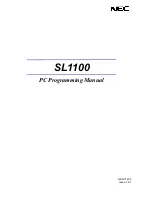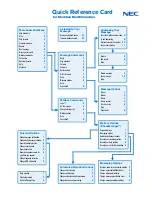
A P P E N D I C E S
page A – 19
WheatNet-IP
/ Apr 2009
The following functions are available:
PFL/Cue Drop Out: Any fader channel that has been placed in Cue will
automatically be removed from Cue when the channel is turned ON.
EFS: Moving a fader up from full off will automatically trigger a START logic
command.
Program D Pre Fader: Sets the PGM D bus to be pre fader.
Program D Pre ON: Sets the PGM D bus to be ON independent of the ON/OFF
switch.
Timer Restart: Forces a return to 0 and start counting on the Timer display when
a fader channel is turned ON.
Fader Cue: Pulling a fader all the way down automatically puts the channel into
Cue.
Remote Ready: Forces the fader channel OFF indicator to be driven by an external
READY logic signal.
Studio 1 Mute: Mutes the studio 1 output when the fader channel is turned ON.
Studio 2 Mute: Mutes the studio 2 output when the fader channel is turned ON.
HP Mute: Mutes the headphone output when the fader channel is turned ON.
CR Mute: Mutes the control room output when the fader channel is turned ON.
Cue Mute: Mutes the cue output when the fader channel is turned ON.
Studio 1 Tally: Activates a tally 1 signal when the fader channel is turned ON.
Studio 2 Tally: Activates a tally 2 signal when the fader channel is turned ON.
Studio 3 Tally: Activates a tally 3 signal when the fader channel is turned ON.
Studio 4 Tally: Activates a tally 4 signal when the fader channel is turned ON.
Bus Minus Pre Fader: Sets the particular bus minus output signal to be pre fader.
Bus Minus Pre On: Sets the particular bus minus output signal to be pre ON.
As a programming example, let’s use the CR Mute function. This function is
commonly used to mute the control room speaker outputs while the talent microphones
are turned on to avoid feedback from occurring if the amplified microphone signal is
passed out the speakers and then picked back up by the microphone. The intention is
that whenever a microphone channel that happens to be located close to the control
room speakers is turned ON, the speakers are automatically turned OFF to prevent the
feedback. Once the microphone channel is turned OFF the control room speakers are
automatically turned back ON.
To enable this function, first identify the microphone source(s) that is(are) located
near the control room speakers. These are the source signals that could cause feedback.
In this situation you would normally want this logic action (mute the speakers) to
happen only with these particular source signals.
Open the VDIP form on the control surface by using the Options menu on the Main
tab of the control surface VGA display. This menu can be password protected so you
must have access privileges before you can modify these settings.
















































